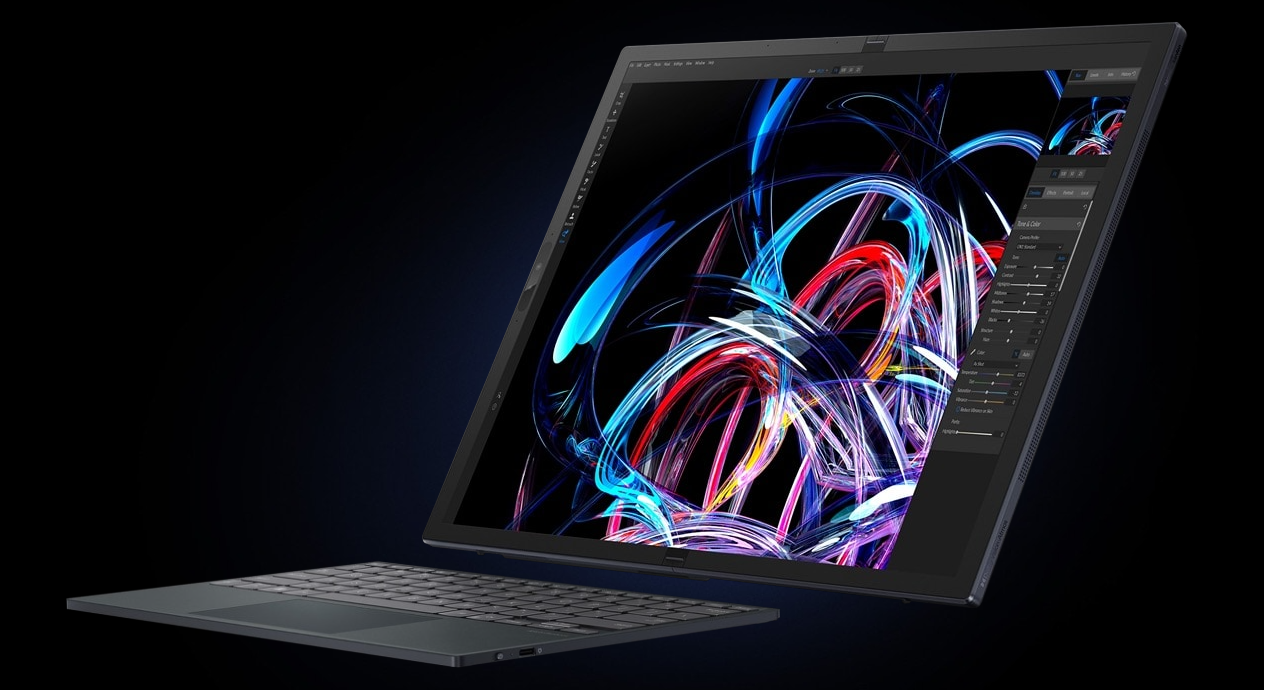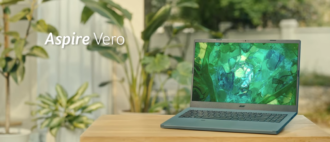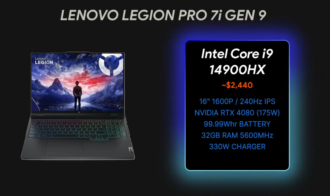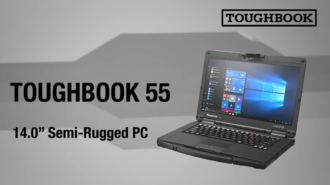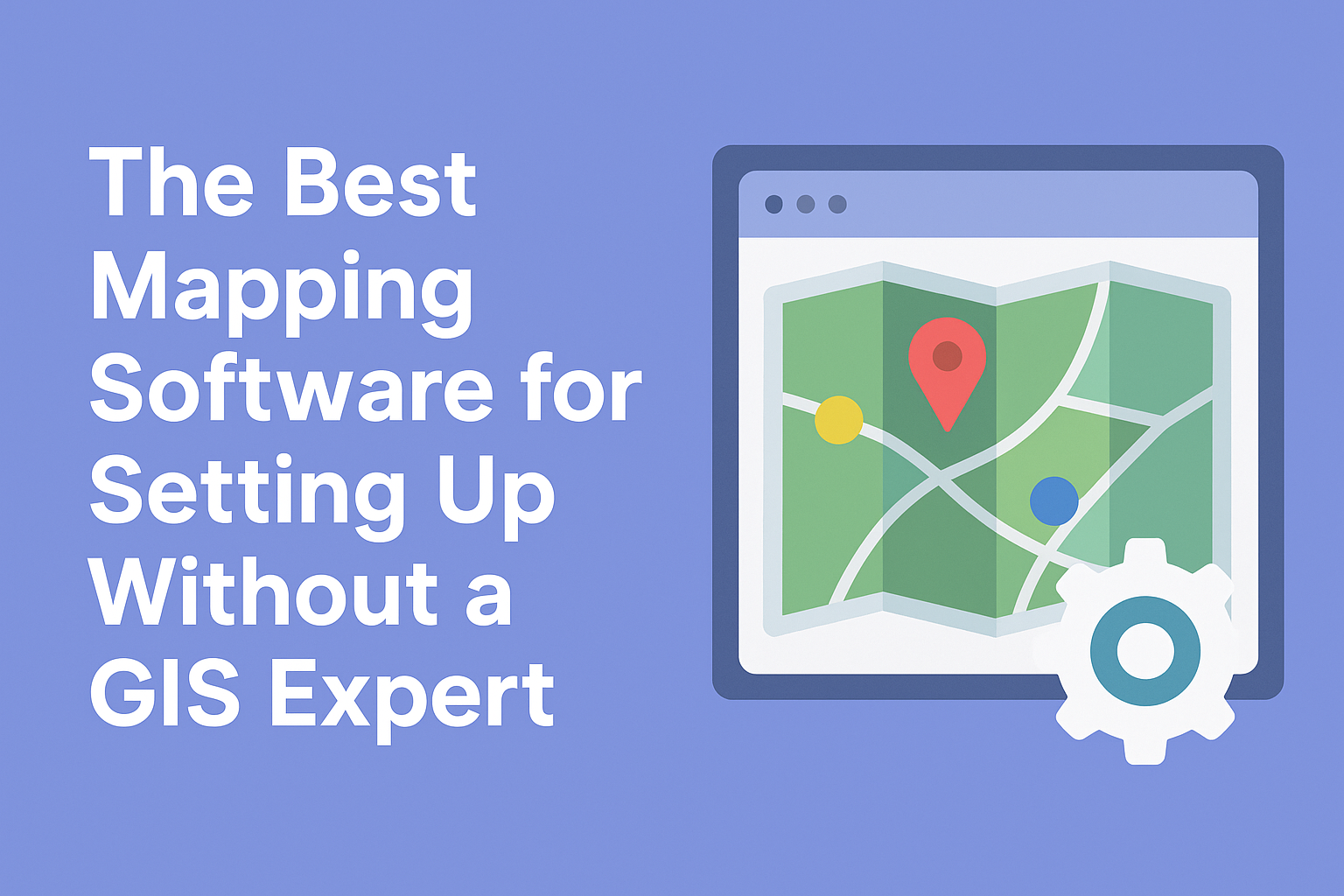Asus Zenbook 17 Fold Review
Foldable phones are starting to become actual products instead of just cool gadgets. Do all PCs follow the same path? Yo, check out Asus’ new Zenbook 17 Fold OLED ($3,499.99)! It’s a foldable laptop with a dope built-in kickstand and wireless keyboard. Lenovo’s ThinkPad X1 Fold better watch out! This design has many different modes for different tasks, and the screen is enormous; you can even split it into two smaller screens that are still big enough to be helpful. Dude, the Zenbook 17 Fold OLED is crazy expensive, just like Samsung’s $1,800 Galaxy Z Fold 4.
Asus Zenbook 17 Fold Specifications
| Laptop Class | Detachable 2-in-1 |
| Processor | Intel Core i7-1250U |
| RAM | 16 GB |
| Boost Drive Type | SSD |
| Screen Size | 17.3 inches |
| Graphics Processor | Intel Iris Xe Graphics |
| Wireless Networking | Wi-Fi 6E, Bluetooth 5.2 |
| Dimension | 0.46 by 11.32 by 14.9 inches |
| OS | Windows 11 |
| Battery Life | 11:15 |
PROS
- Impressive design for a big screen in a small, foldable package
- The attractive 17.3-inch OLED touch screen.
- It has a wireless keyboard and a built-in frame.
CONS
- It costs a lot of money.
- Intel U-series processors don’t do as well as they should.
Design
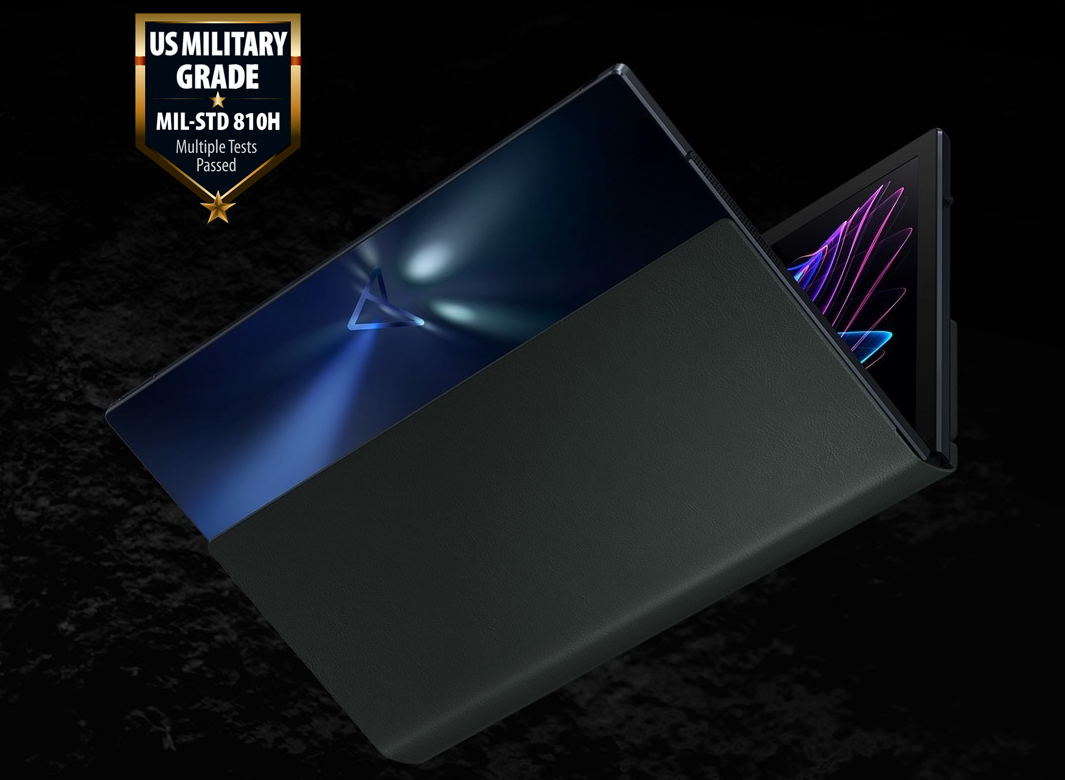
The last foldable I tested was a 13.3-inch model. It came with a Bluetooth keyboard and touchpad, but they were so small that they were almost unusable because they had to fit in such a small case. Some of the keys on that model had four symbols on them, and the touchpad was too small to move. However, the 17-inch size lets the keyboard be about the same size as one on a 12.5-inch computer, and this one was straightforward to use.
The keypad isn’t very thick. That doesn’t mean the keys don’t go far enough (they have an excellent click) or the keyboard isn’t well made. It just means that my strokes barely pushed down on the deck. I don’t care about this, which didn’t change my experience. But I know it bothers many people, so if you’re one of those people, this keyboard isn’t for you.
Display
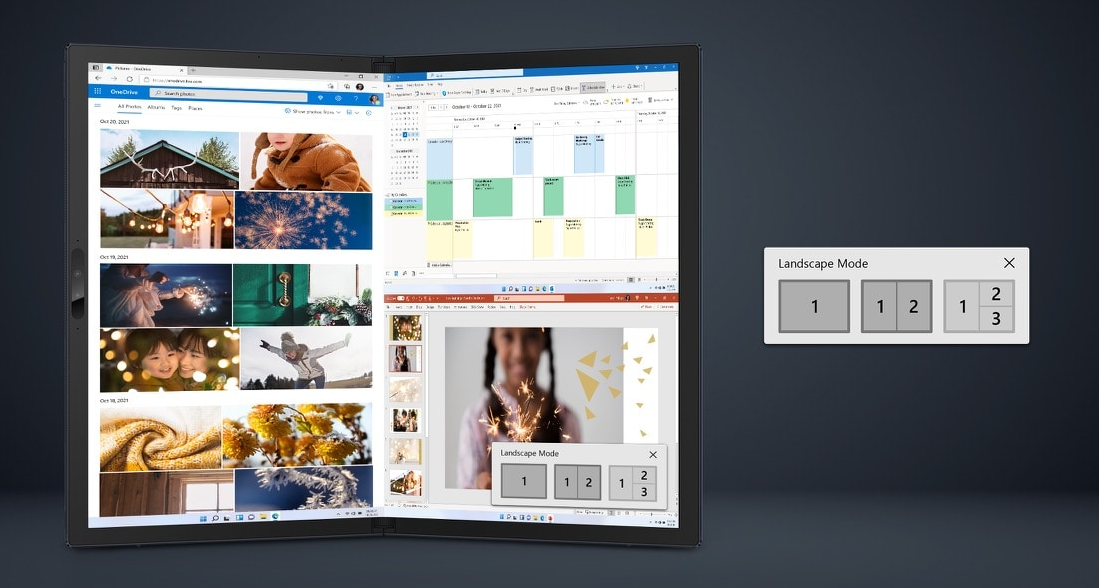
Even though the Asus is the second folding Windows PC we’ve tested, it’s hard to compare it to the Lenovo X1 Fold because it’s more prominent in almost every way. After years of computers that mostly look and act the same, I couldn’t help but be interested in the device.
The hinge isn’t too distracting since the indentation can’t be avoided and is better than the solid separator on some folding smartphones, but it is visible. Asus says it can be opened and closed over 30,000 times, but I don’t blame you for worrying about the device’s durability. With a folding screen and more moving parts than a standard clamshell or 360-degree convertible laptop hinge, it’s hard not to worry that the display might warp, come loose, or otherwise break in the future.
Keyboard
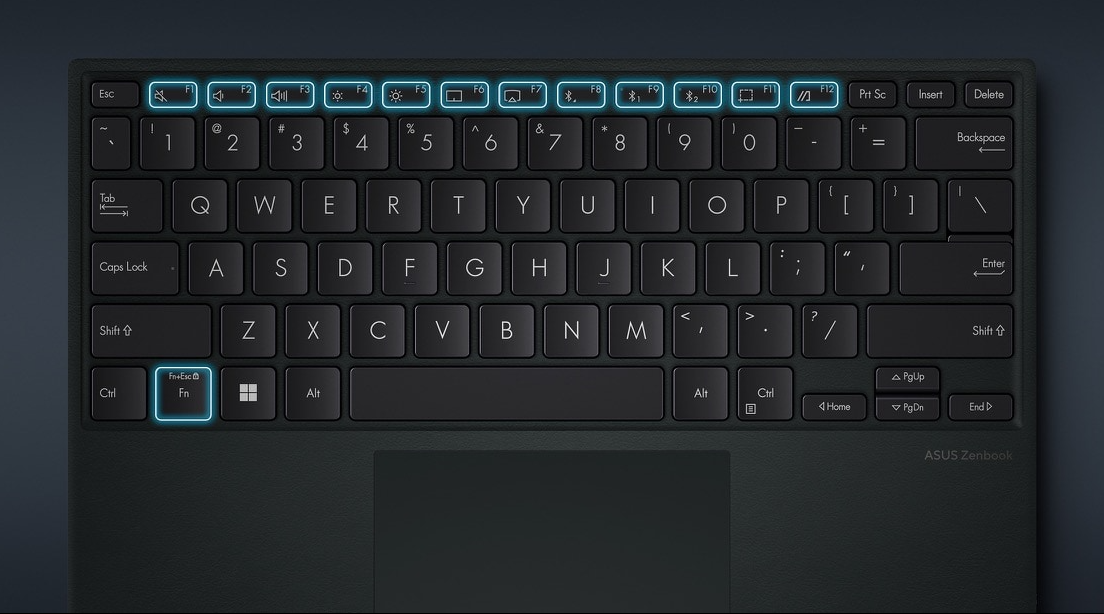
Once the keyboard was paired, if I hadn’t used it in a while, there was sometimes a delay between what I typed and what showed up on the screen. One thing about the keyboard: I found a problem with this kind of removable deck: when I was using it on my lap, the angle it was at made the touchpad think I was pressing it when I wasn’t.
This wasn’t a big deal, but it sometimes happened with the computer keys, which was a bigger problem. During testing, there were a few times when the keyboard thought I was holding down a letter key. I had to slam the backspace key very hard to get it to stop making a never-ending line of letters.
Performance
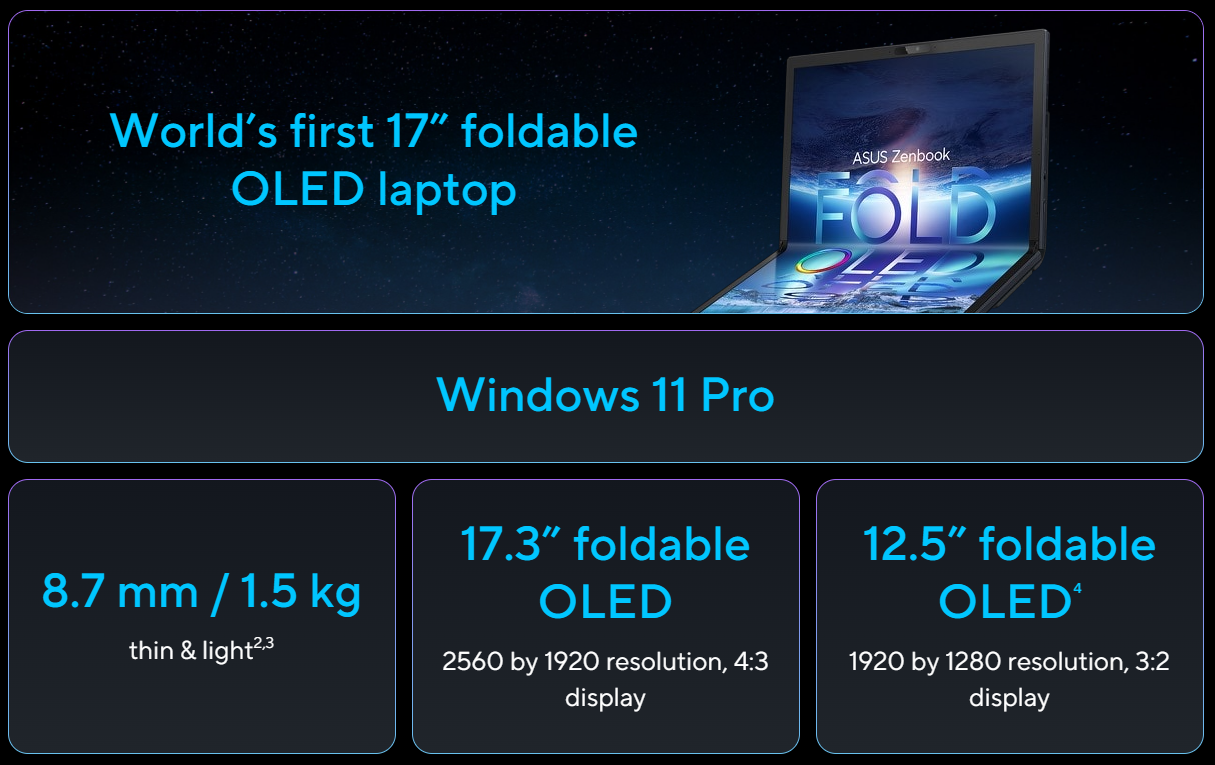
The Zenbook 17 Fold OLED has a lot to show; you can fold it as a PC. It has a 1TB PCIe Gen 4 SSD and an Intel Core i7-1250U processor. It also has 16GB of LPDDR5 RAM. The Intel Core i5-L16G7 was used in the first Windows-based folding computer, the ThinkPad X1 Fold, which came out in 2020.
This may not be the best way to compare the two, but we include it to show how much more foldable it can be when they use a chip made for computers instead of one made to be low-power. Our rivals are the HP Spectre x360 13.5, a convertible with an Intel Core i7-1255U processor like ours, and the Apple MacBook Air with M2.
Audio
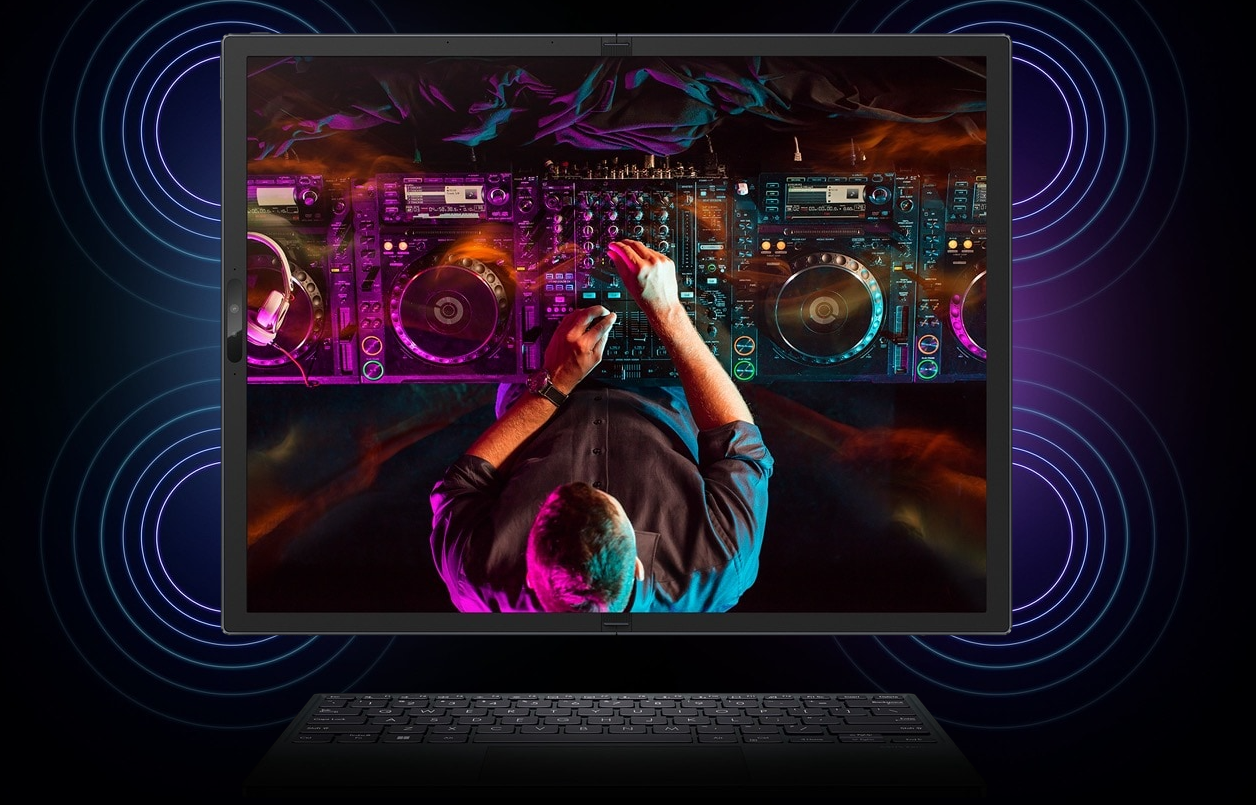
There is some room for improvement with the speakers. They get plenty loud, and “City of Gods” by Fivio Foreign quickly fills up my New York City flat. But numbers aren’t all that matter. With the default options, I thought the sound was flat, with the drums, synths, and vocals mixing. I liked the “Detailed” music setting in the Dolby Access software because it made the different parts of the music stand out. Still, the bass wasn’t that great, a common problem with small devices.
Conclusion
The Asus Zenbook 17 Fold OLED mostly does what it’s supposed to do, making a fantastic tablet that can also be used as an actual laptop. There are a few exceptions, though: The price seems crazy, especially when considering how well a mobile desktop, gaming laptop, or even an ultraportable can do the same job for the same price or even less.
The Fold isn’t even close to being an Editors’ Choice pick, but because of its uniqueness, we’re giving it 3.5 stars instead of 3 stars. But if you look at the Zenbook Fold as a proof of concept for future devices that will hopefully be cheaper and easier to use, you can’t deny that it’s fantastic. We’re happy it’s there.

